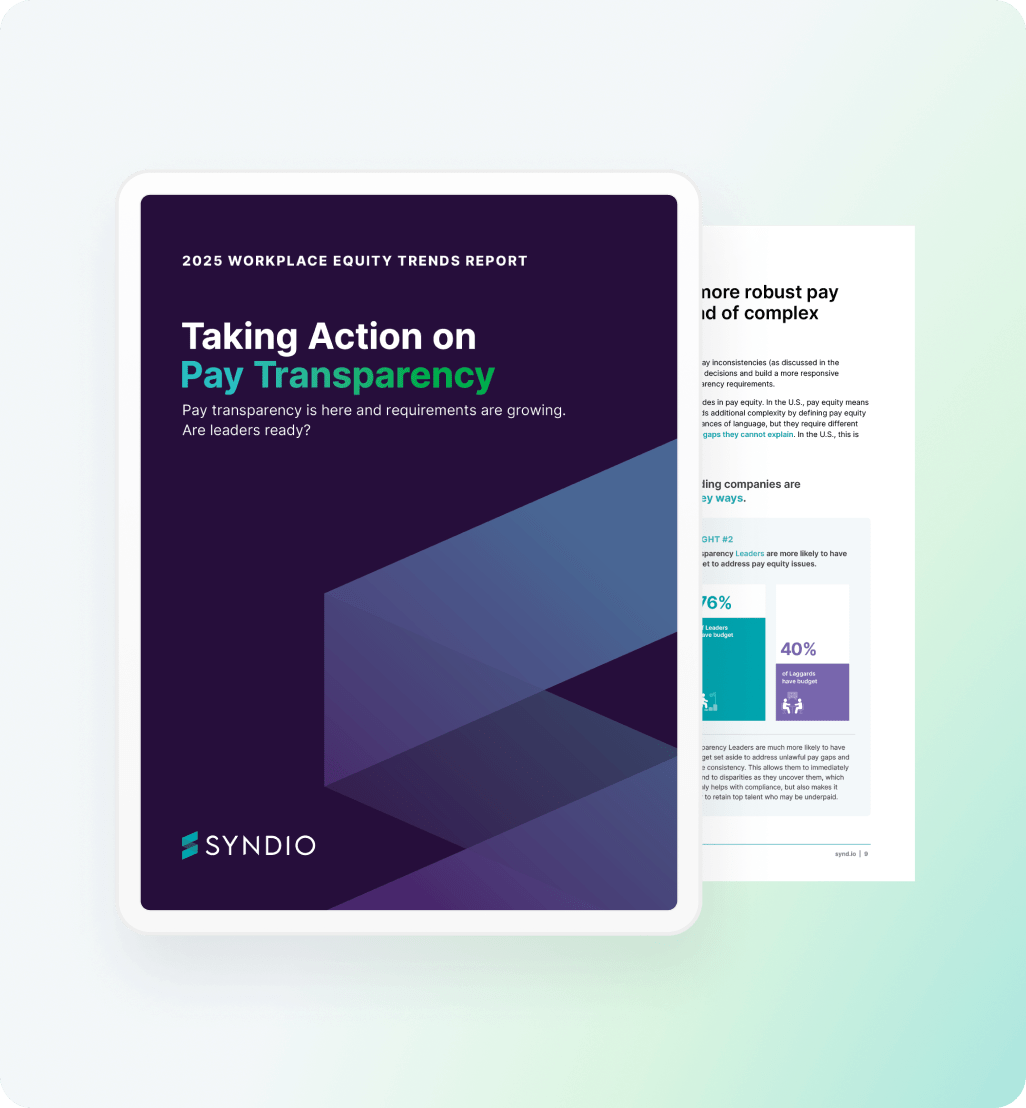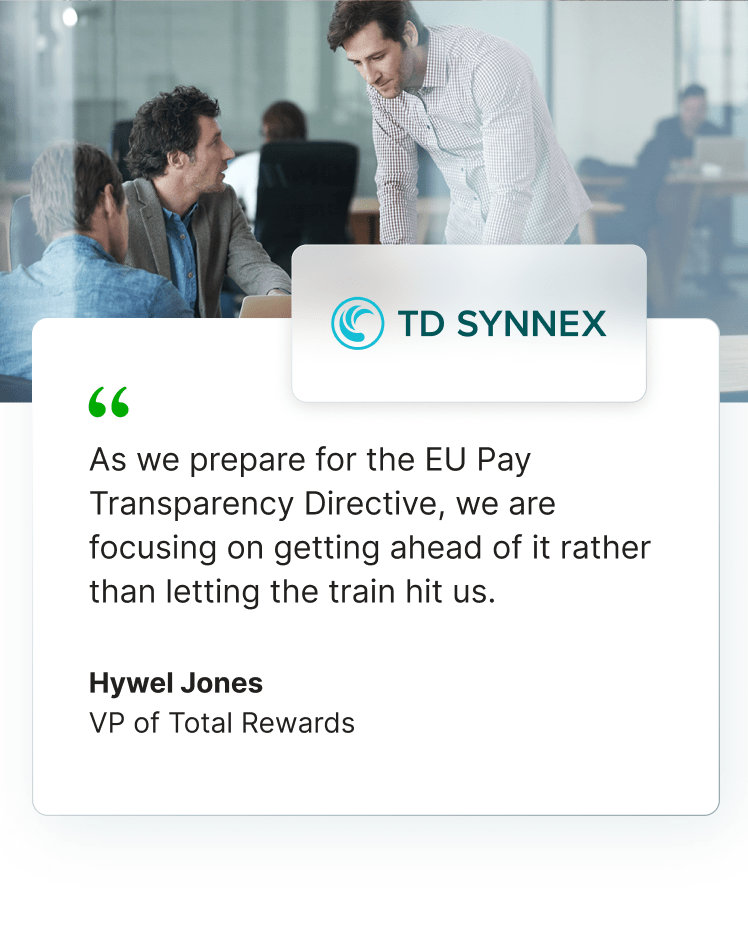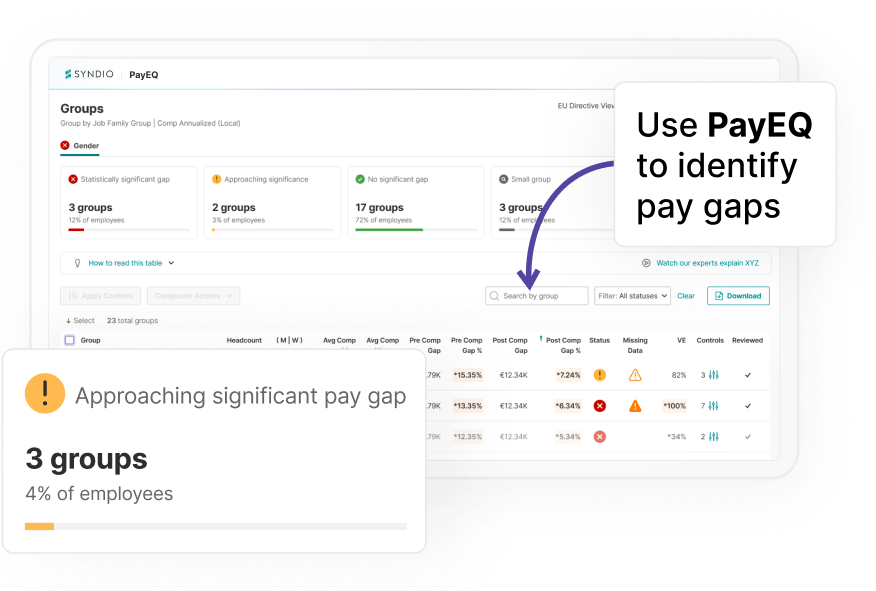2025 TRENDS REPORT
Leading companies take on pay transparency
Pay transparency pressures are growing — and HR and Total Rewards leaders are taking the reins. Syndio's latest research reveals where your peers stand and how they're building proactive strategies to meet these demands and move the business forward. Dive in to find out:
- Which looming pay transparency deadlines are keeping HR leaders up at night
- Why companies are not prepared for pay transparency and career transparency
- How companies are evolving their pay equity strategies to get ahead
- And more

Top pay transparency resources
How to Win in the Pay Transparency Era
Learn how to upgrade your rewards strategy to meet growing requirements.
2024 CompTech Market Insight Survey
Get a free copy of the report to learn why Syndio is the #1 choice for pay equity.
EU Pay Transparency Directive Playbook
Get best practices to efficiently comply with the Directive.


Syndio helps you comply with growing pay transparency requirements

Pay transparency demands can overwhelm even the most proactive organizations. Syndio's proven pay transparency solutions and domain experts help you meet every requirement — faster, easier, and with a custom strategy that moves your business forward.
Global leaders, including many in the Fortune and FTSE 100, trust Syndio's enterprise-grade technology and legally defensible methodologies to:
- Resolve pay gaps, faster with PayEQ®
- Make fair pay decisions with Pay Finder™
- Streamline pay reporting with Global Pay Reports

